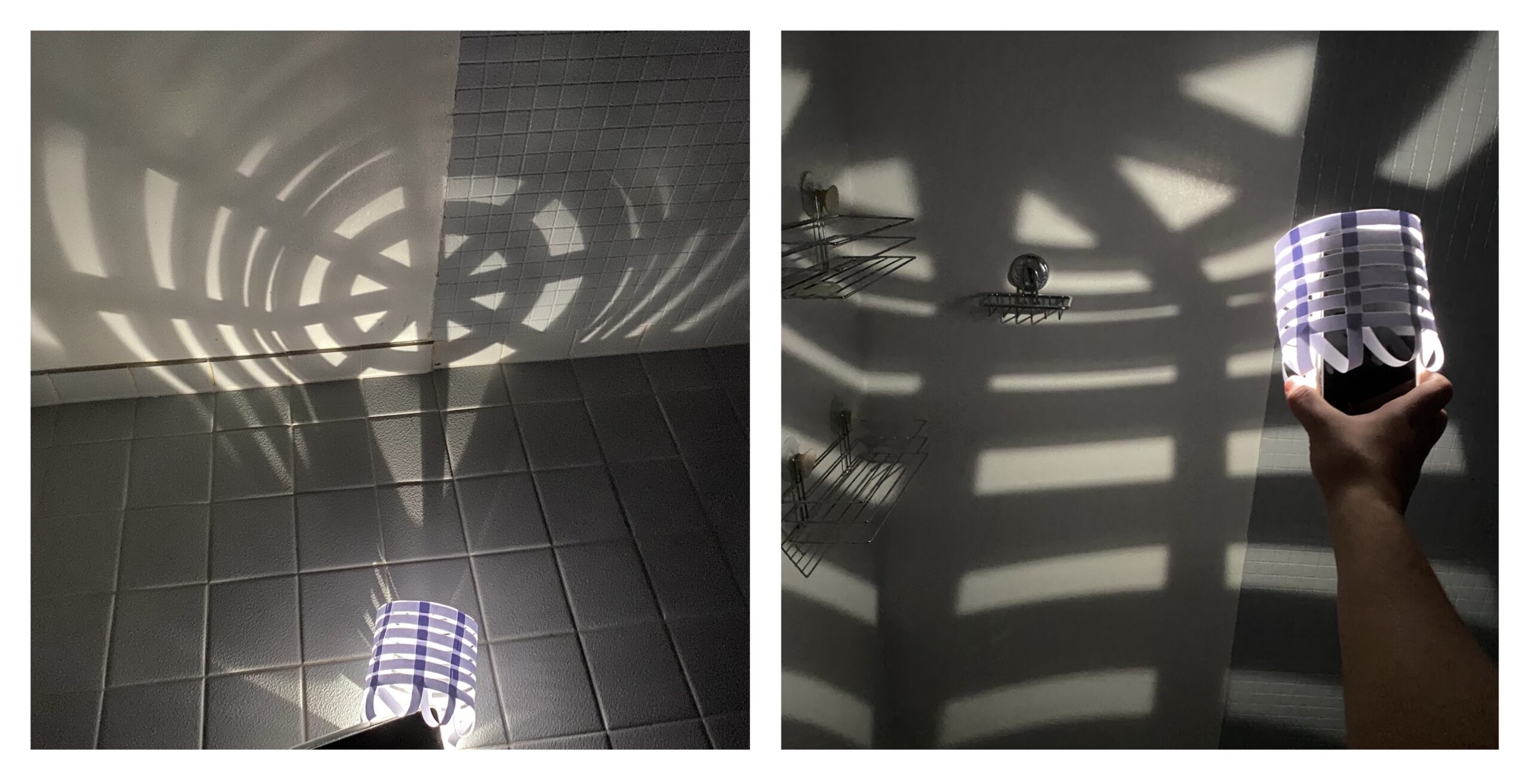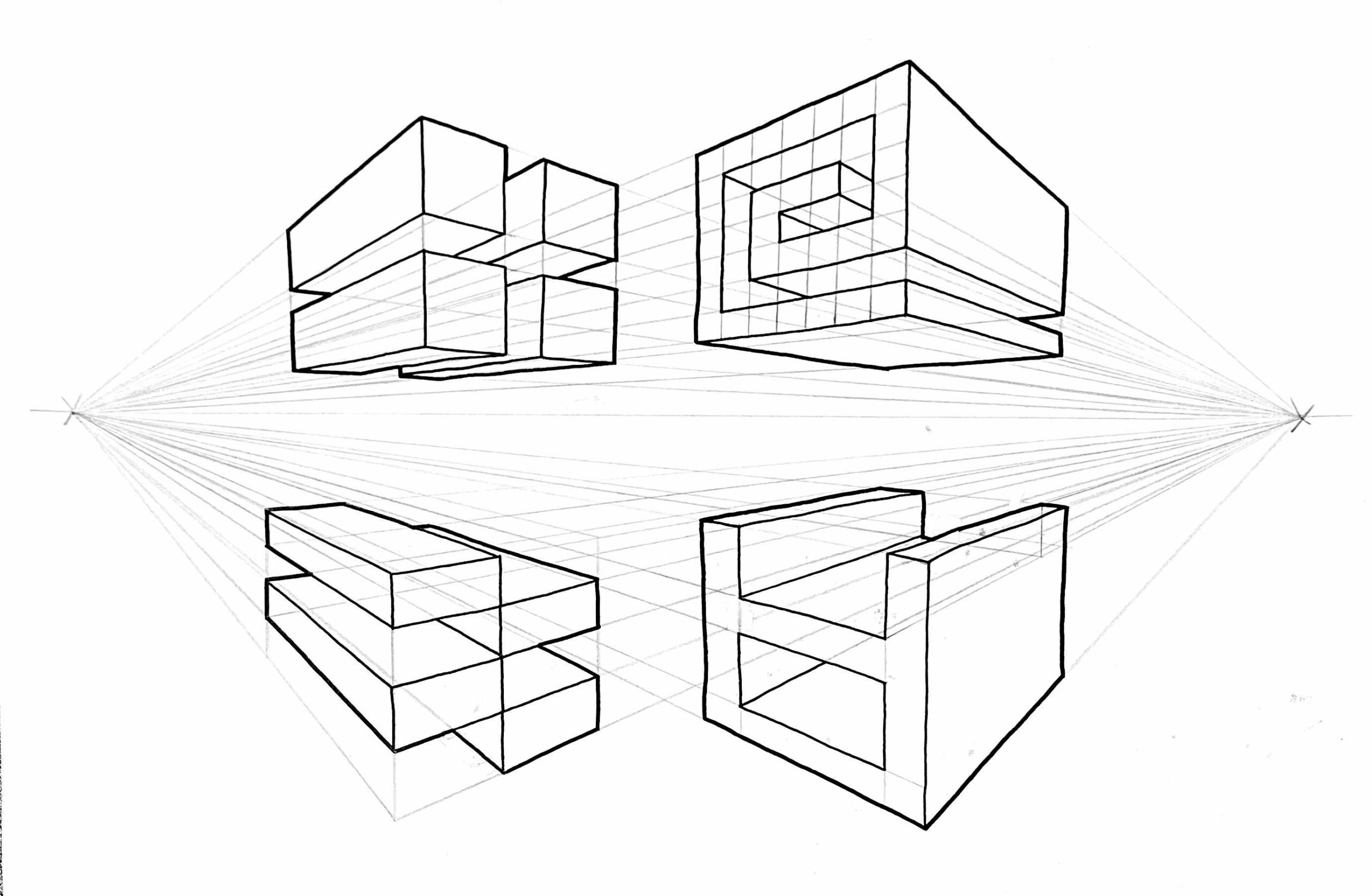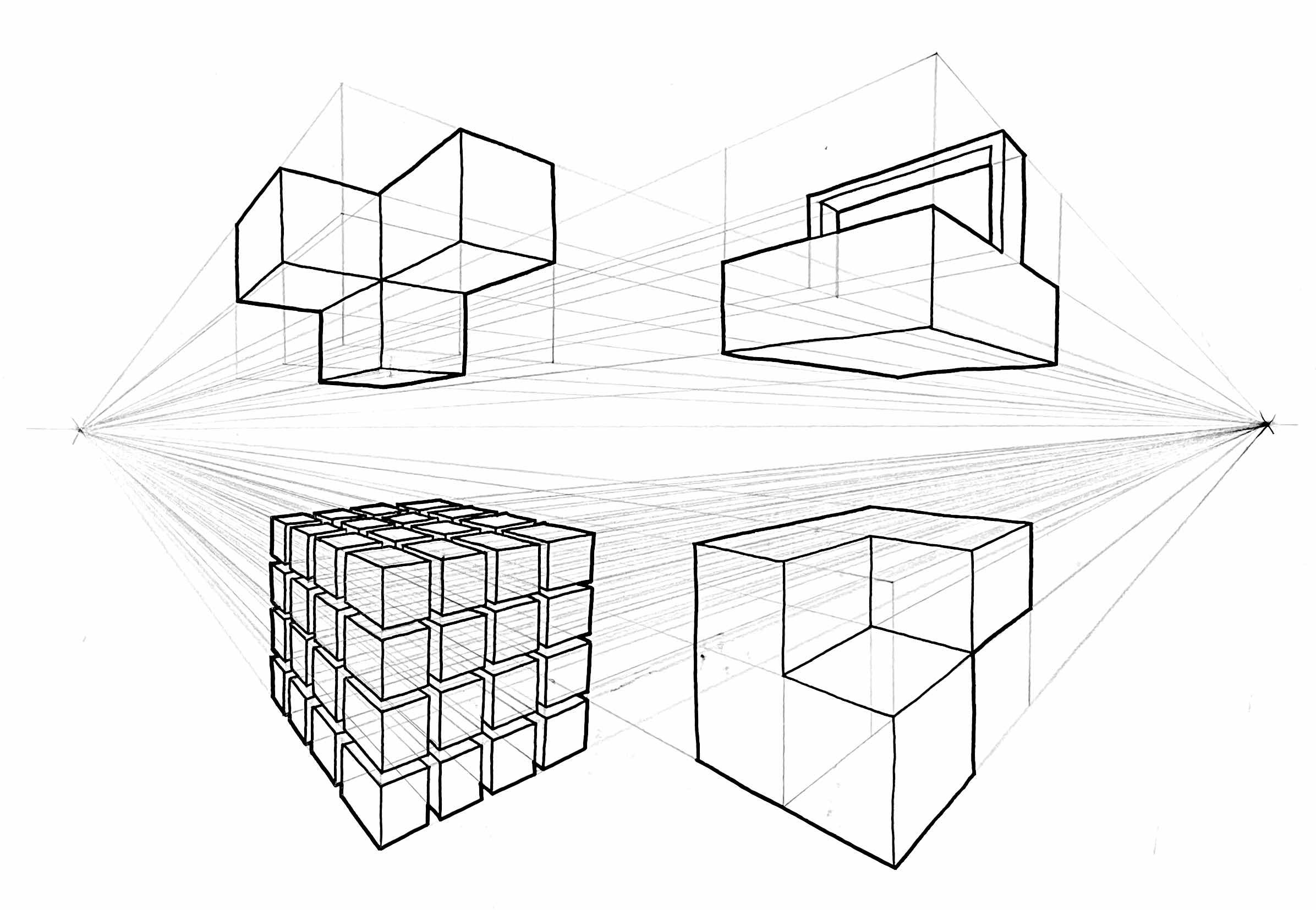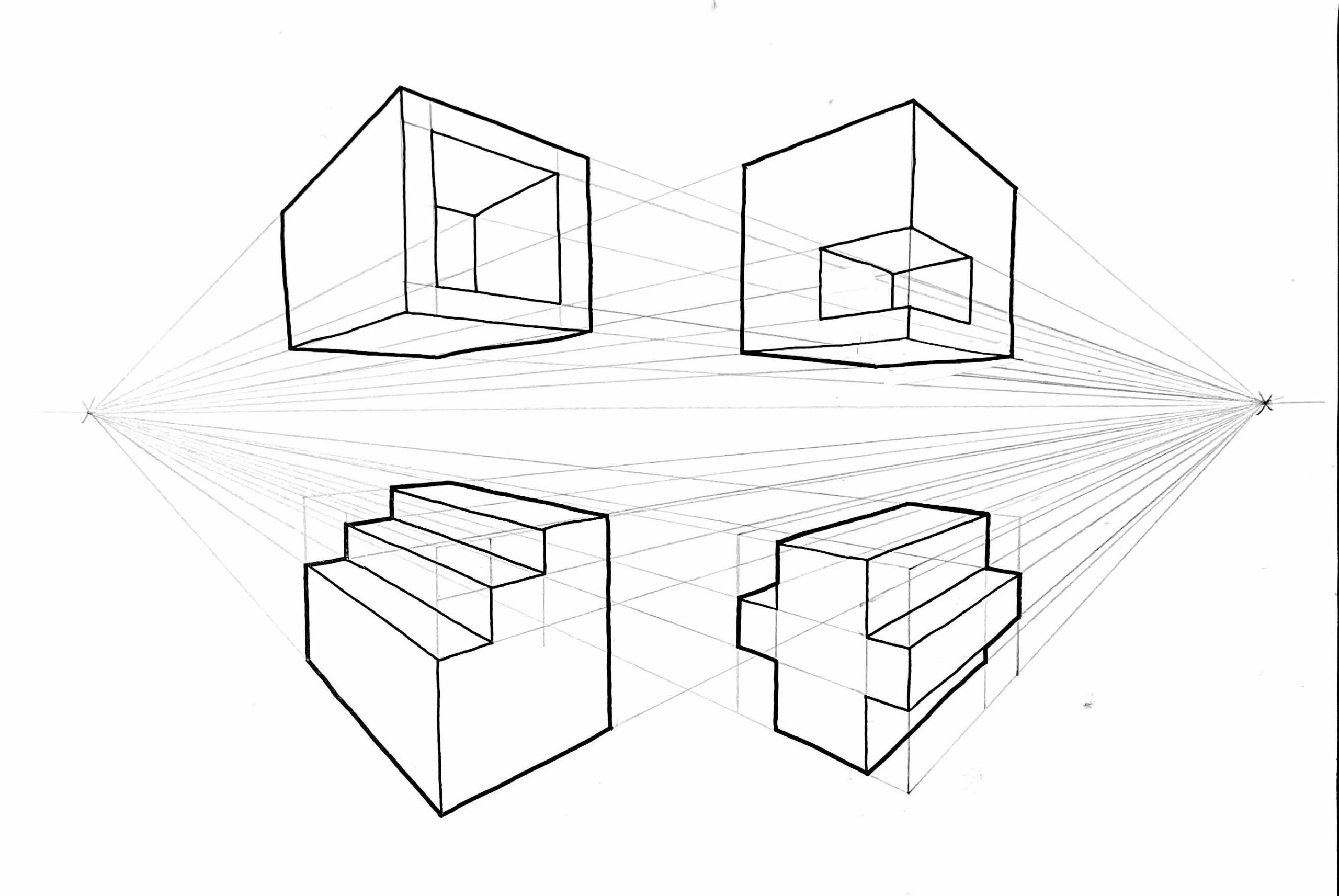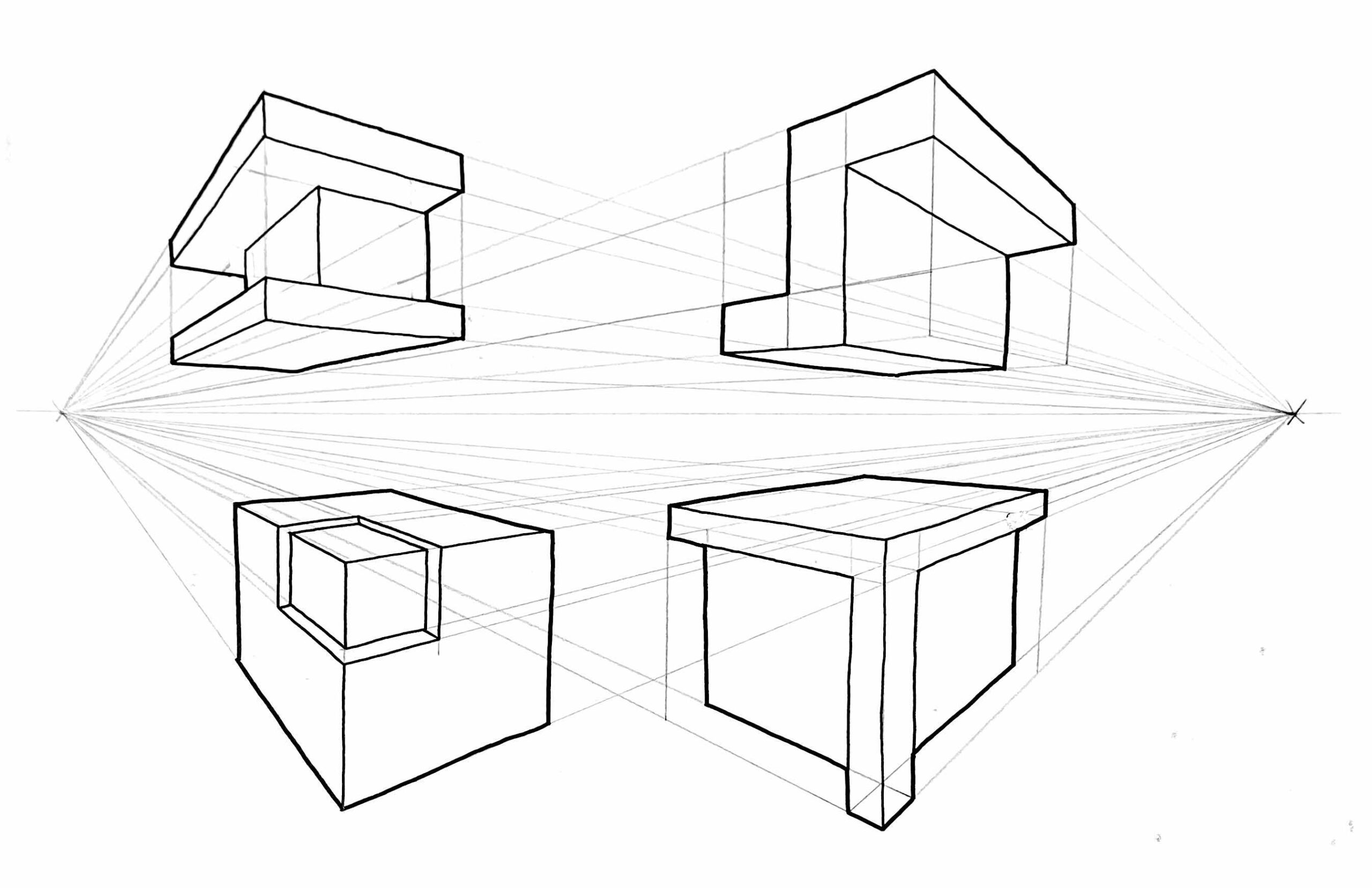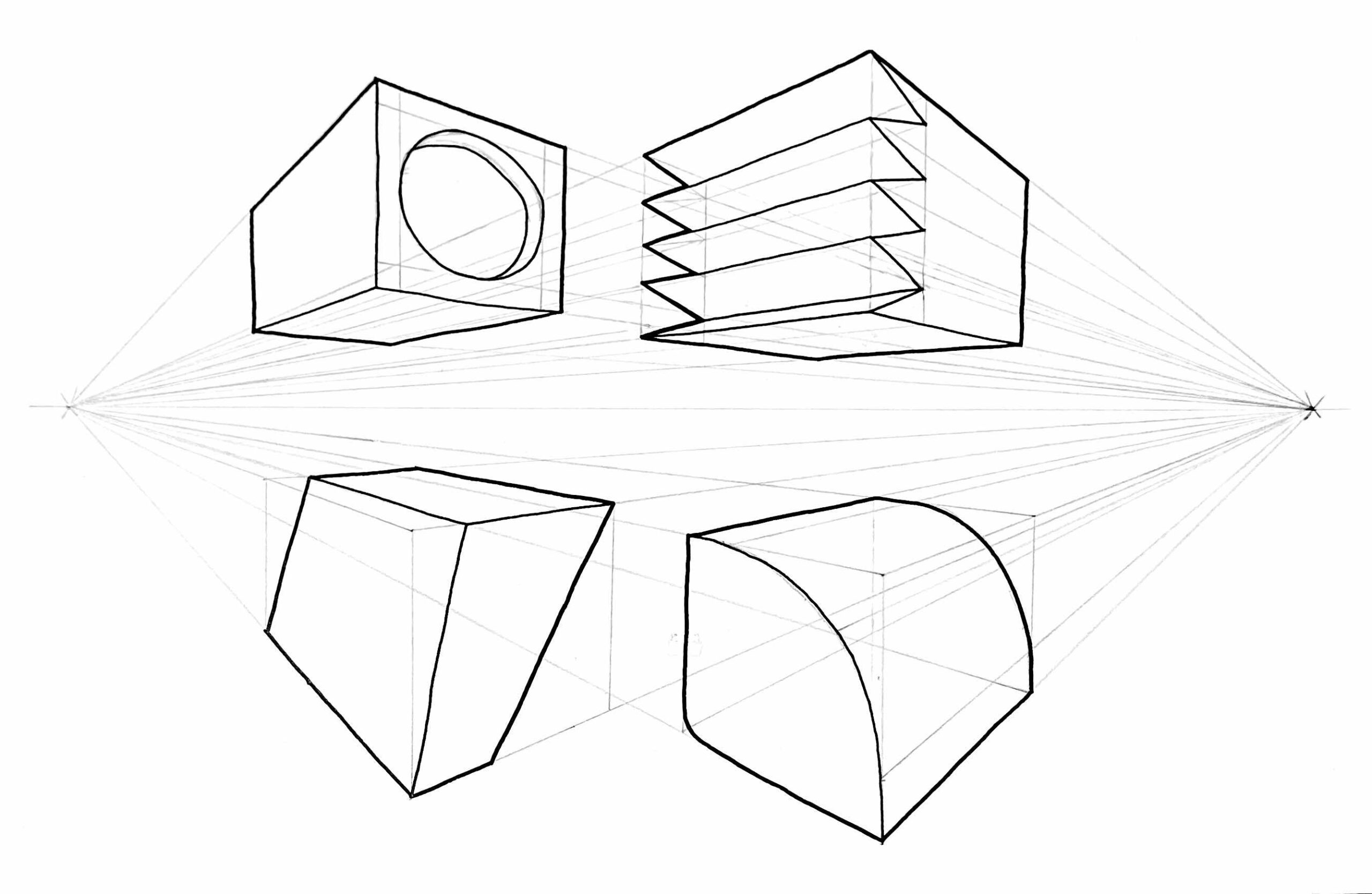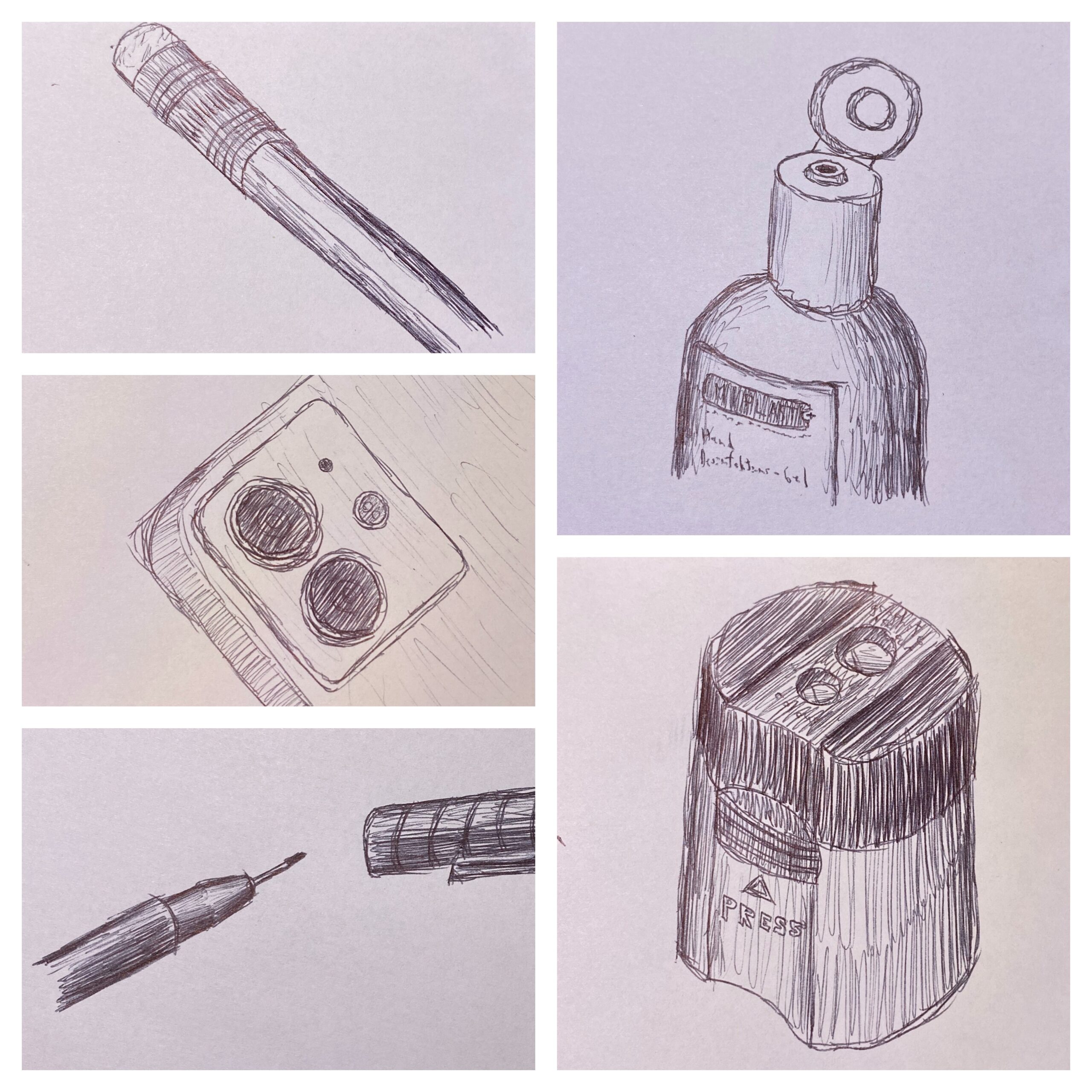For the first drawing ILA, I started by just practicing to draw different primitives using cuboids as a base. And as a challenge to myself, I did this whole first drawing ILA freehand, which though definitely harder was very good practice.
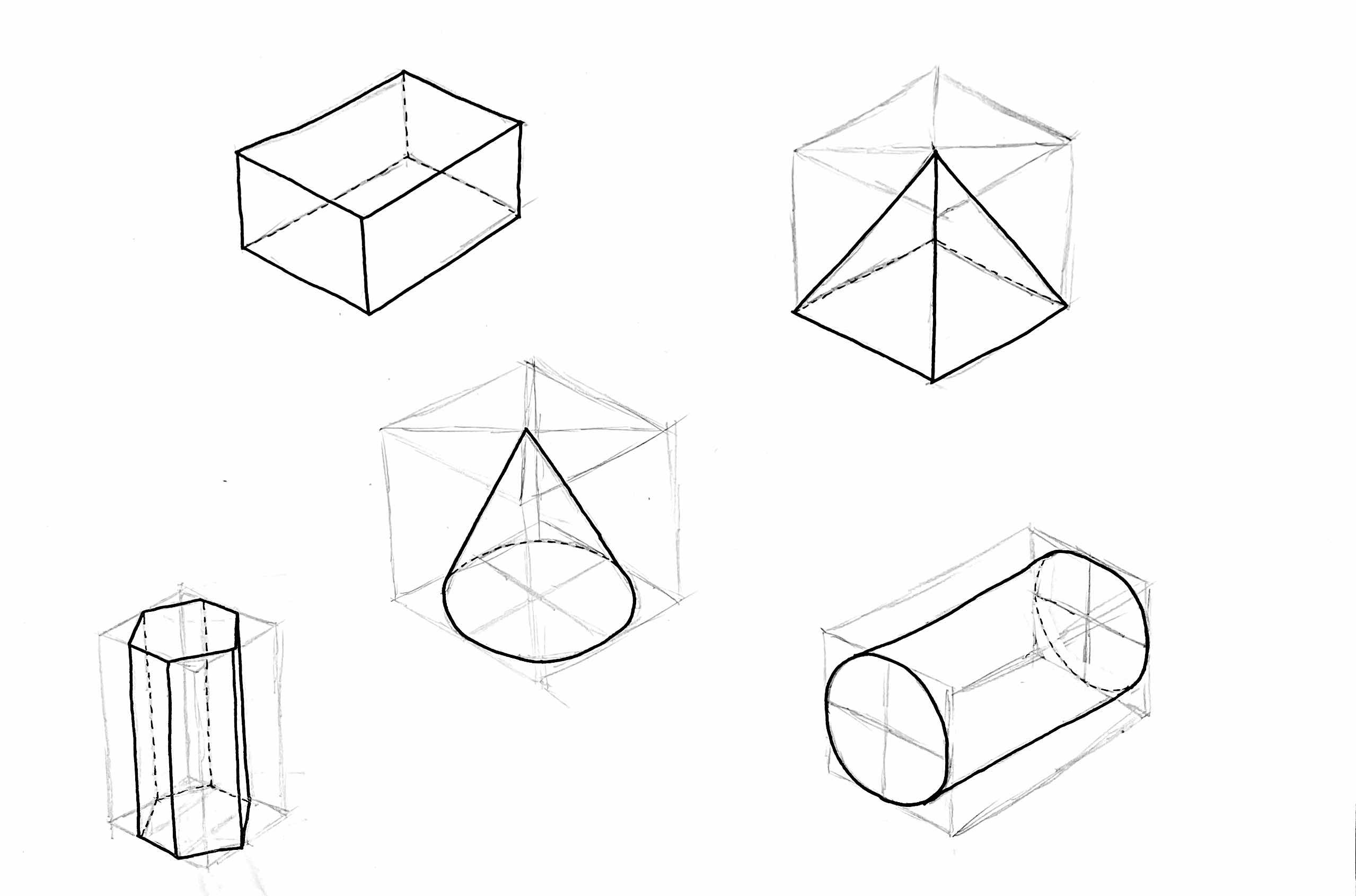
I also did this with some modified/ combined primitives, as an extra little bit of practice.
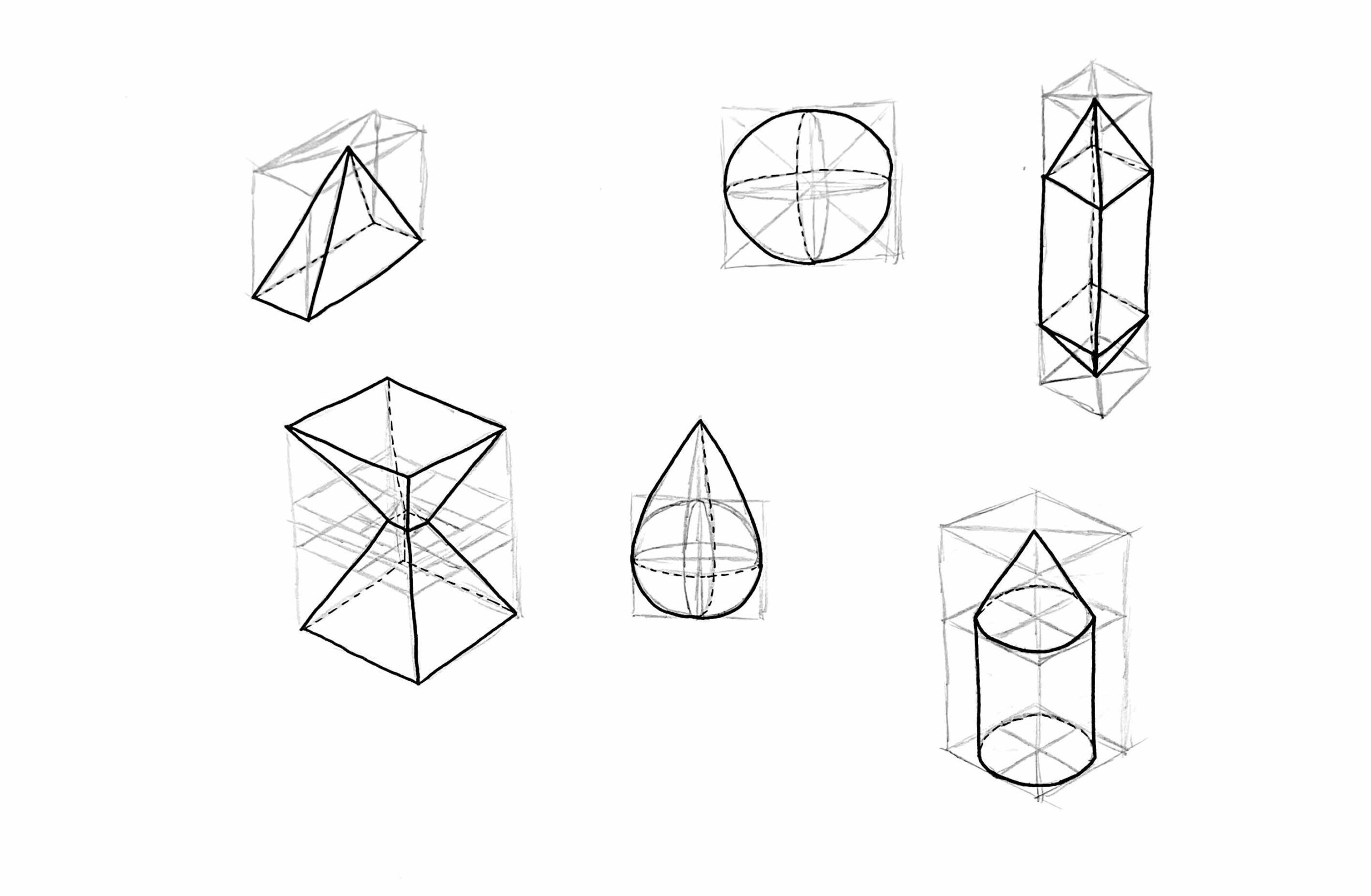
I then drew a few of these on a ground line (still freehand), as a base for the shading bit of this ILA.
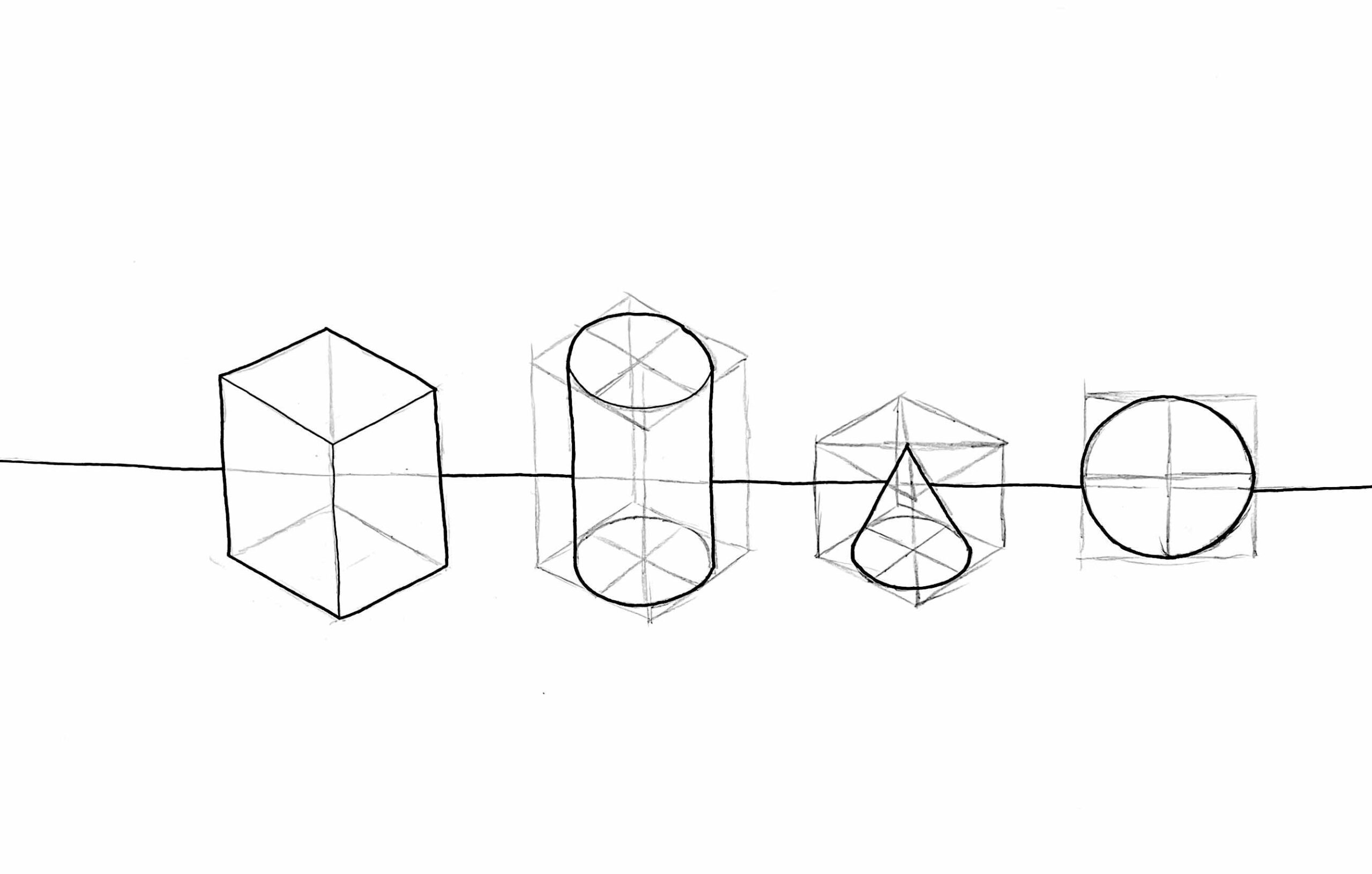
I once again decided to work with color, as it doesn’t really affect the exercise/ technique, and I prefer the look of it. And this exercise was actually harder than I had thought, as I tend to never do shading when I draw, and as such I have very little practice with it.
Even if I did understand the technique, having to understand where different highlights/ reflections was confusing. However, after this task and the sphere ones last week, I think I’m really starting to get the hang of it.
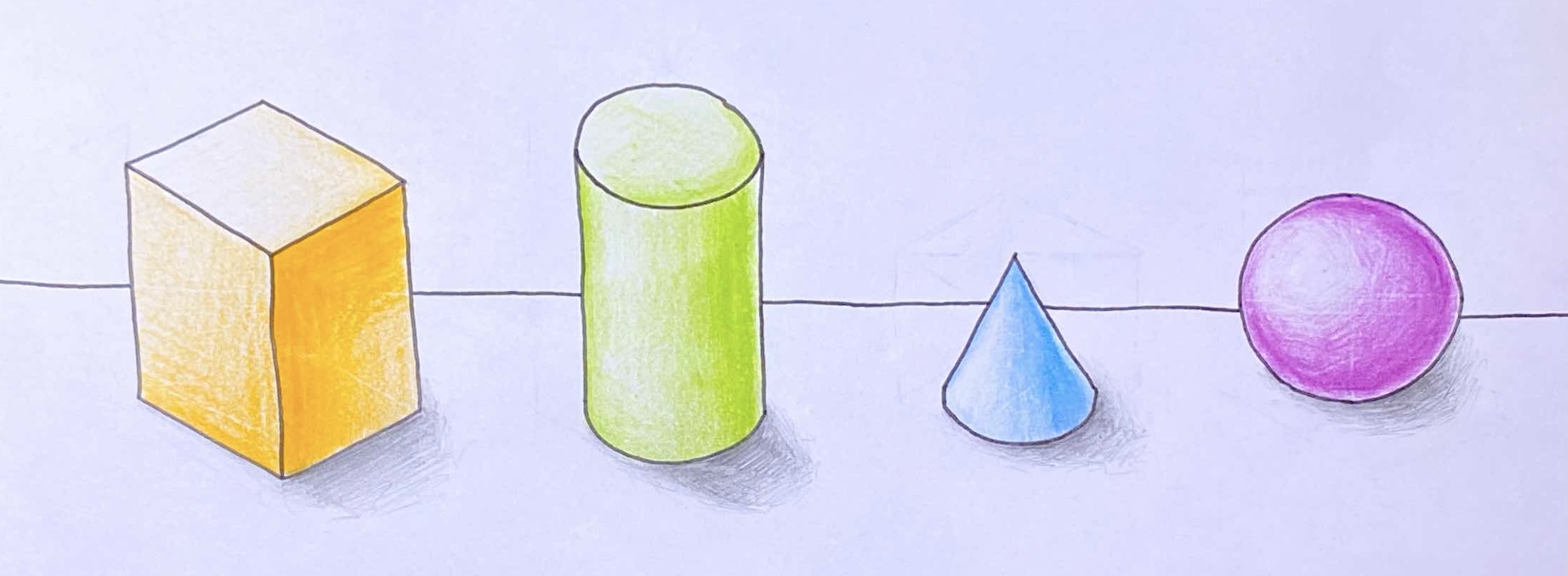
For the second drawing ILA, I made a grid in one point perspective so that I could practice drawing ellipses. I used the reference geometry method we looked at earlier in the course when drawing the grid to make sure my squares were even, and this wouldn’t have an impact on the ellipses.
This was a really useful exercise for me, as I had even said early in the course that I had trouble with ellipses and wanted to learn how to better draw them. And actually the grid and the axis were really useful, as I feel before I can do them fully free hand, I need the guides to help me understand how they work and the proper hand movement/ technique.
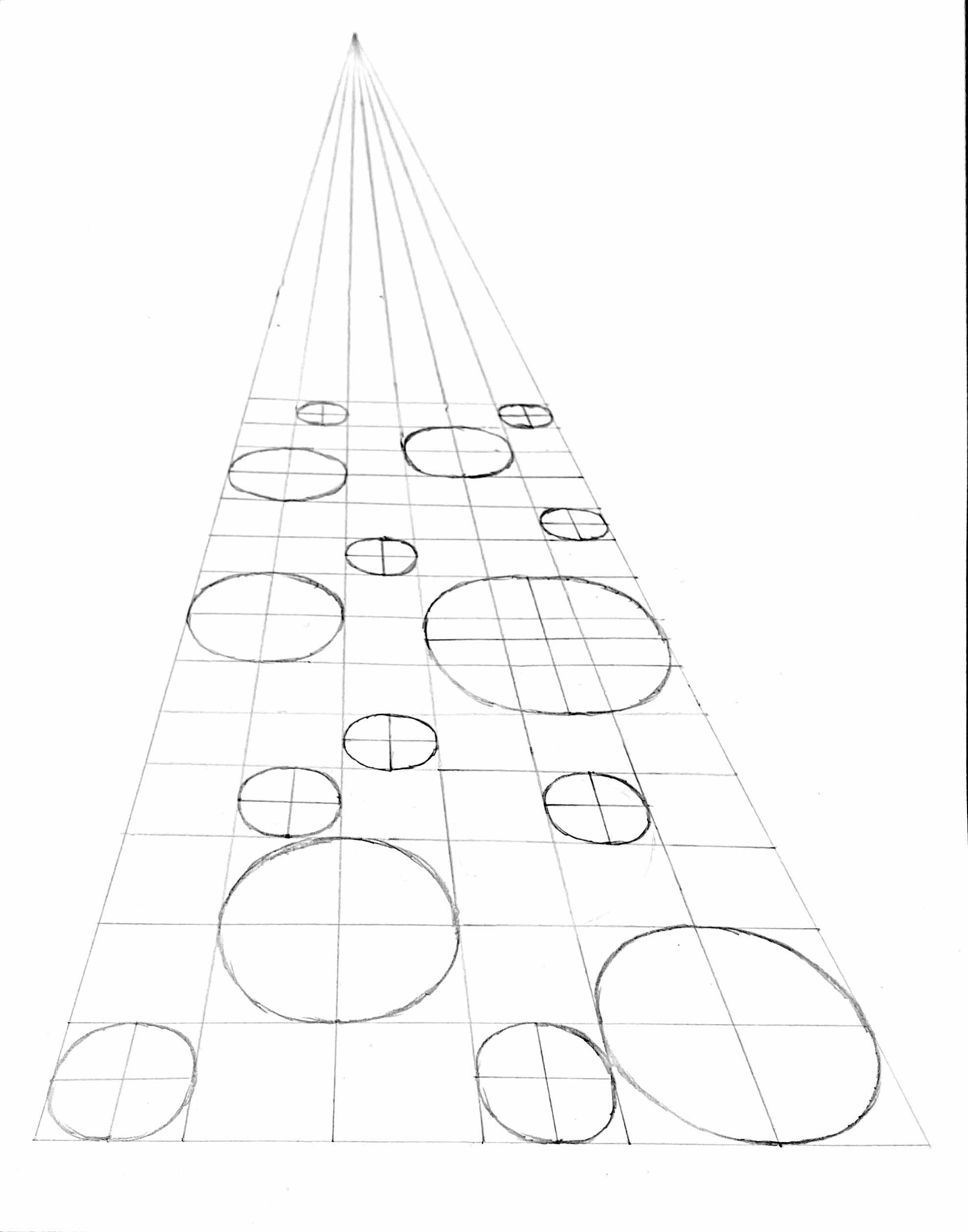
I then turned some of these into cylinders. Where this was more challenging than I thought was that I purposely did the upper ellipses of the cylinders fully freehand, without the axis to guide me. And this meant I really had to trust my hand and eyes, and also not just follow the lines of the bottom ellipse which was harder than I thought.

However, all the axis for these ellipses were aligned with the grid, so it did make them regular and I feel easier to draw. So I also did another page of drawing ellipses, only this time making the axis a lot more random/ irregular, which was more challenging, but definitely good practice. And by the end, I started feeling like I didn’t need the axis as much, and I had a better understanding of how the ellipses should look.
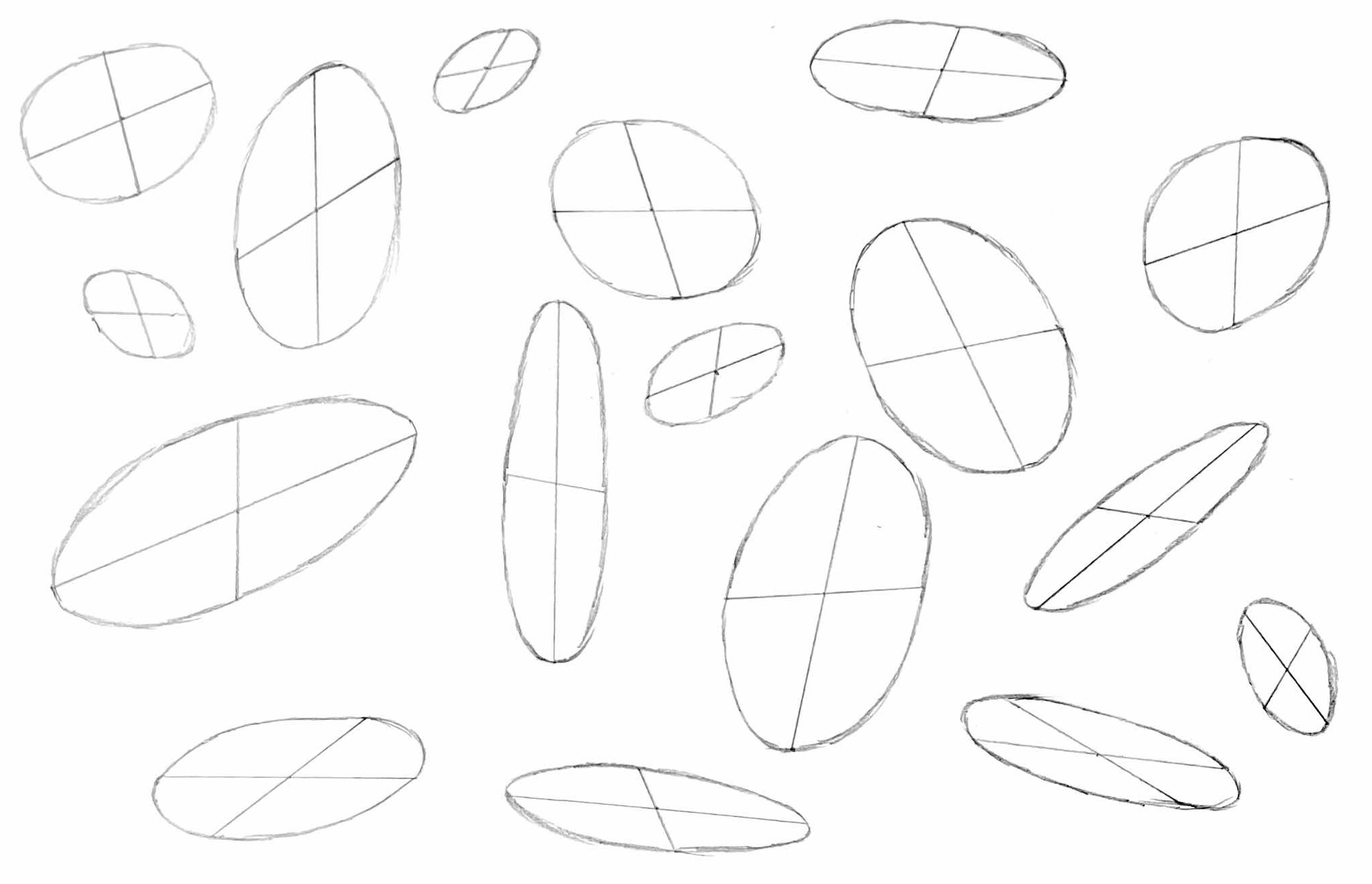
So though I definitely need more practice drawing ellipses, as it’s obviously not something you just try once and can do perfectly, I think I’ve at least developed a better understanding of the technique, and my ellipses actually are more regular and look a lot more like ellipses, which is a big step in the right direction.
EDIT: After getting comments on the ellipse drawings, I realised I had gotten confused between the major and minor axis, and the perspective guidelines. So I went back in and added the major and minor axis, to make sure I understood the difference and knew how to do this properly.
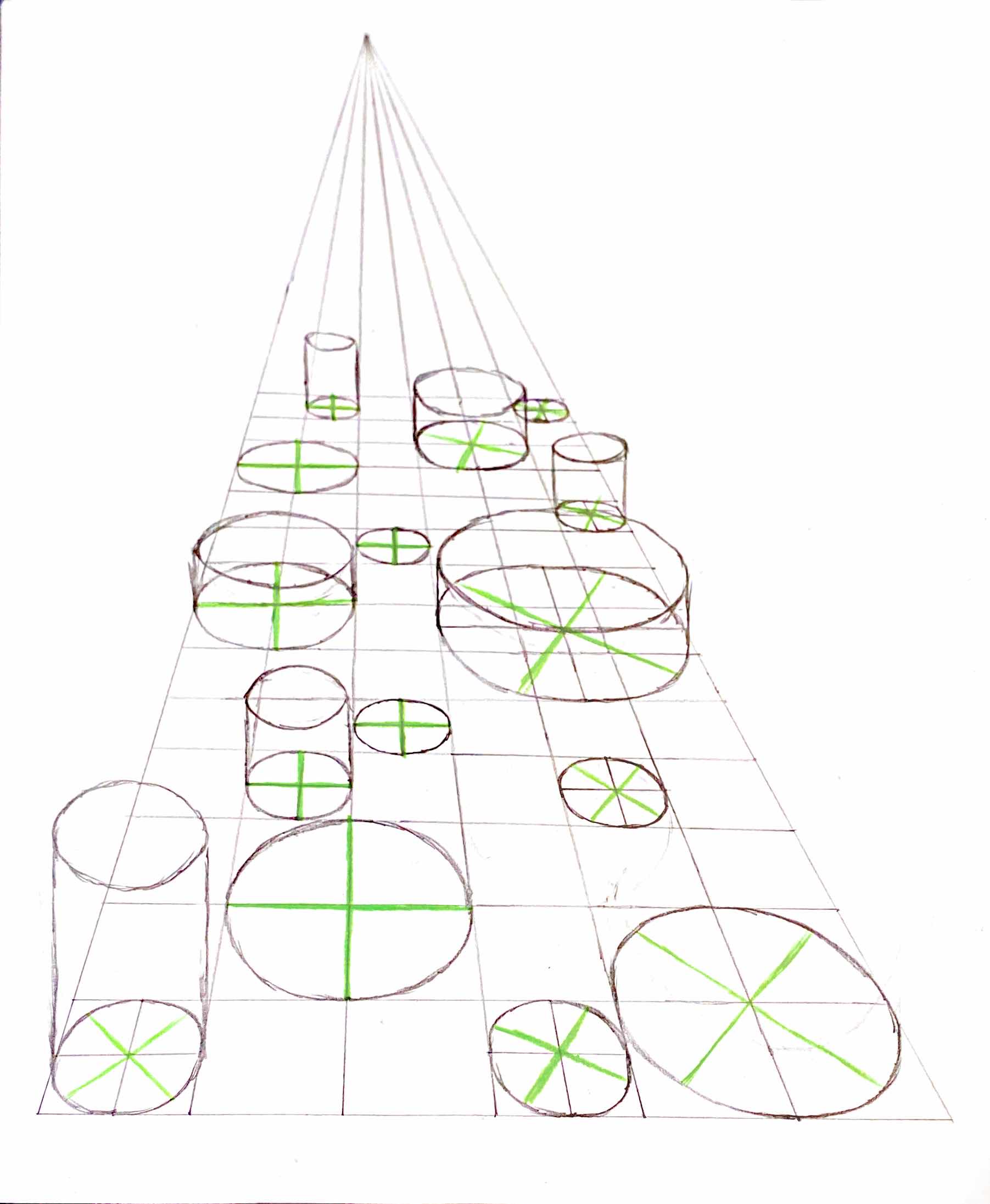
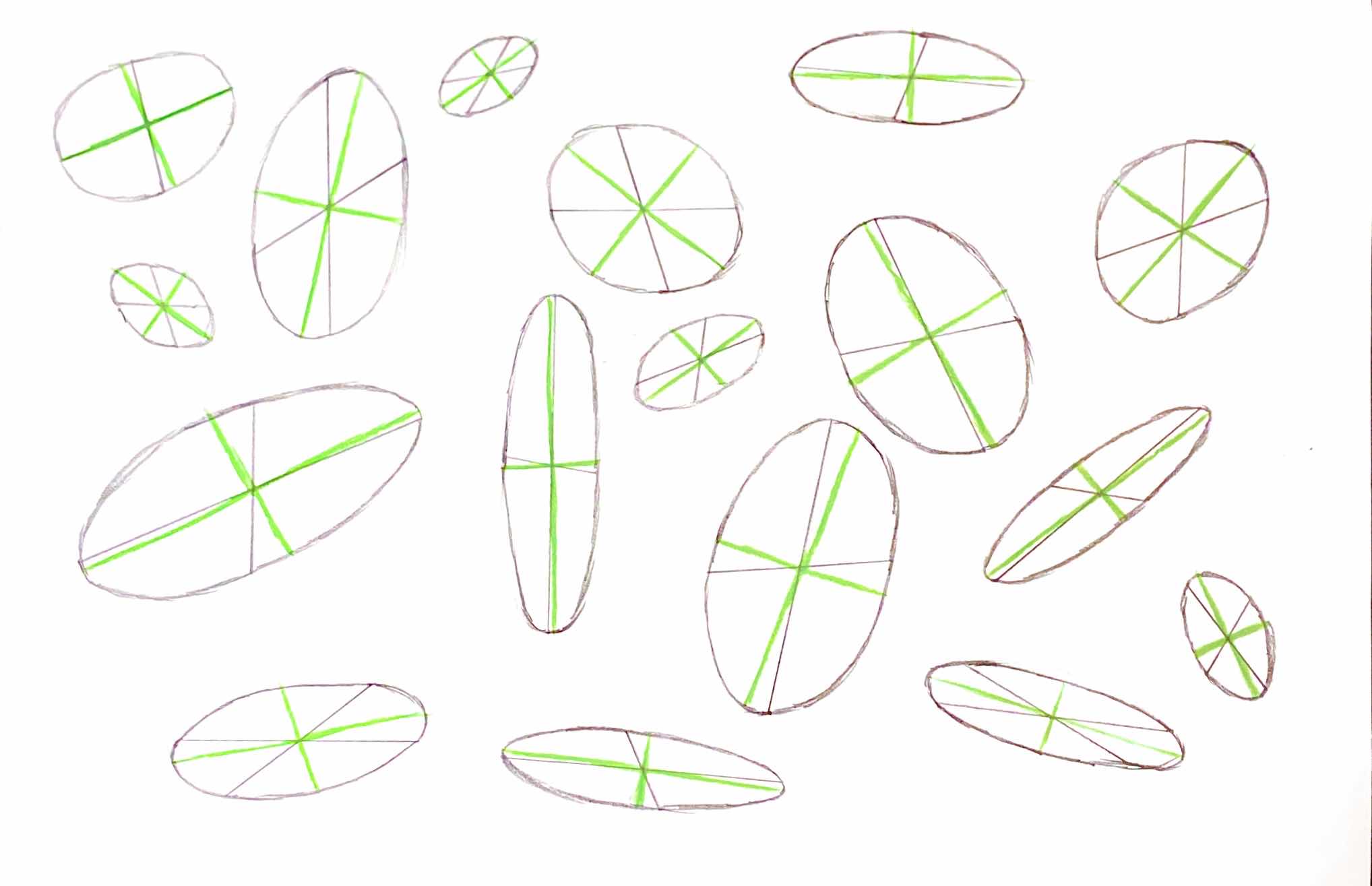
Based on another comment, I also tried to redo the shaded primitives, only this time using the same color for the shading and the outlines. And it is really interesting seeing how much of a difference that can make in terms of realism, or at least in terms of how 3D it looks.



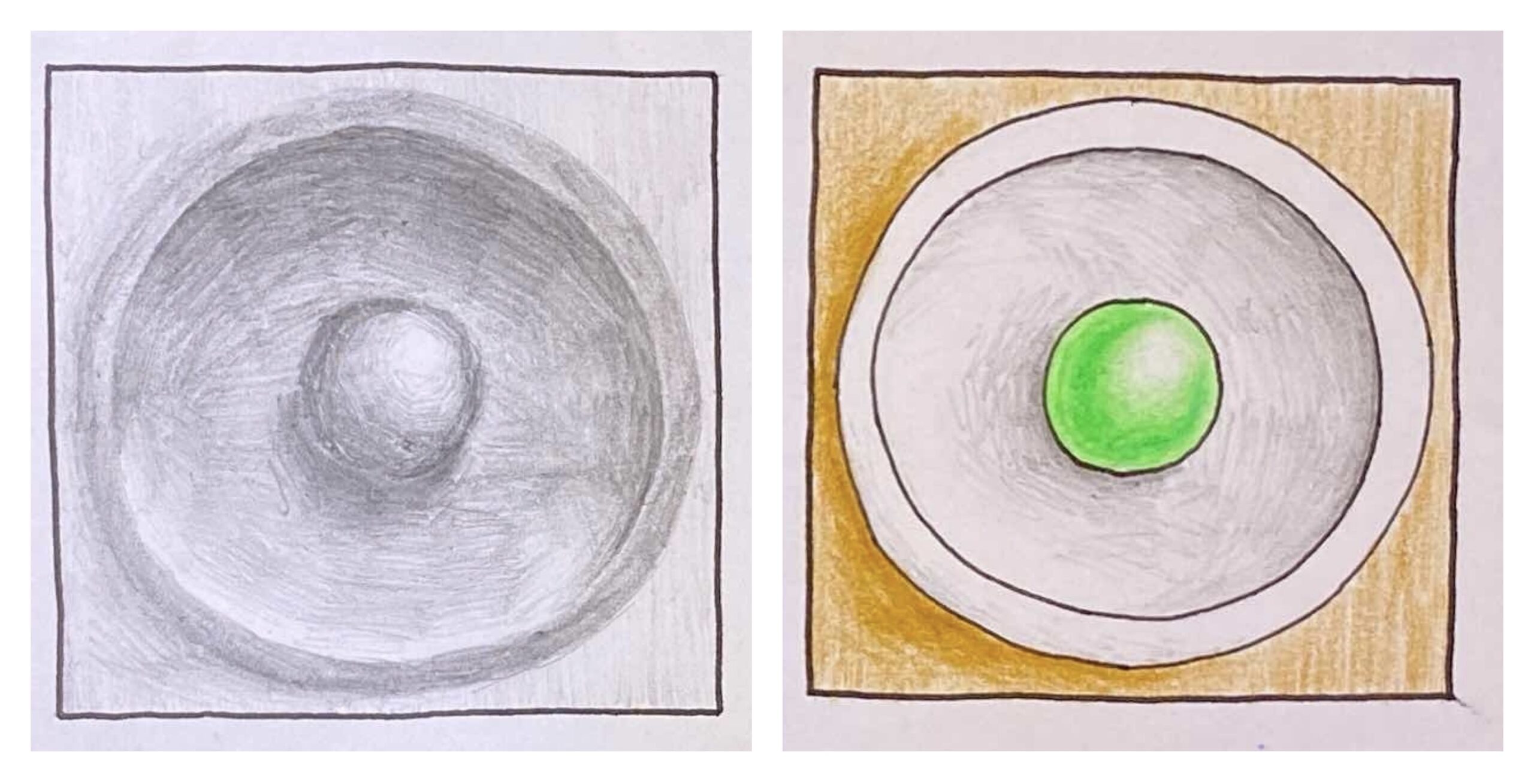
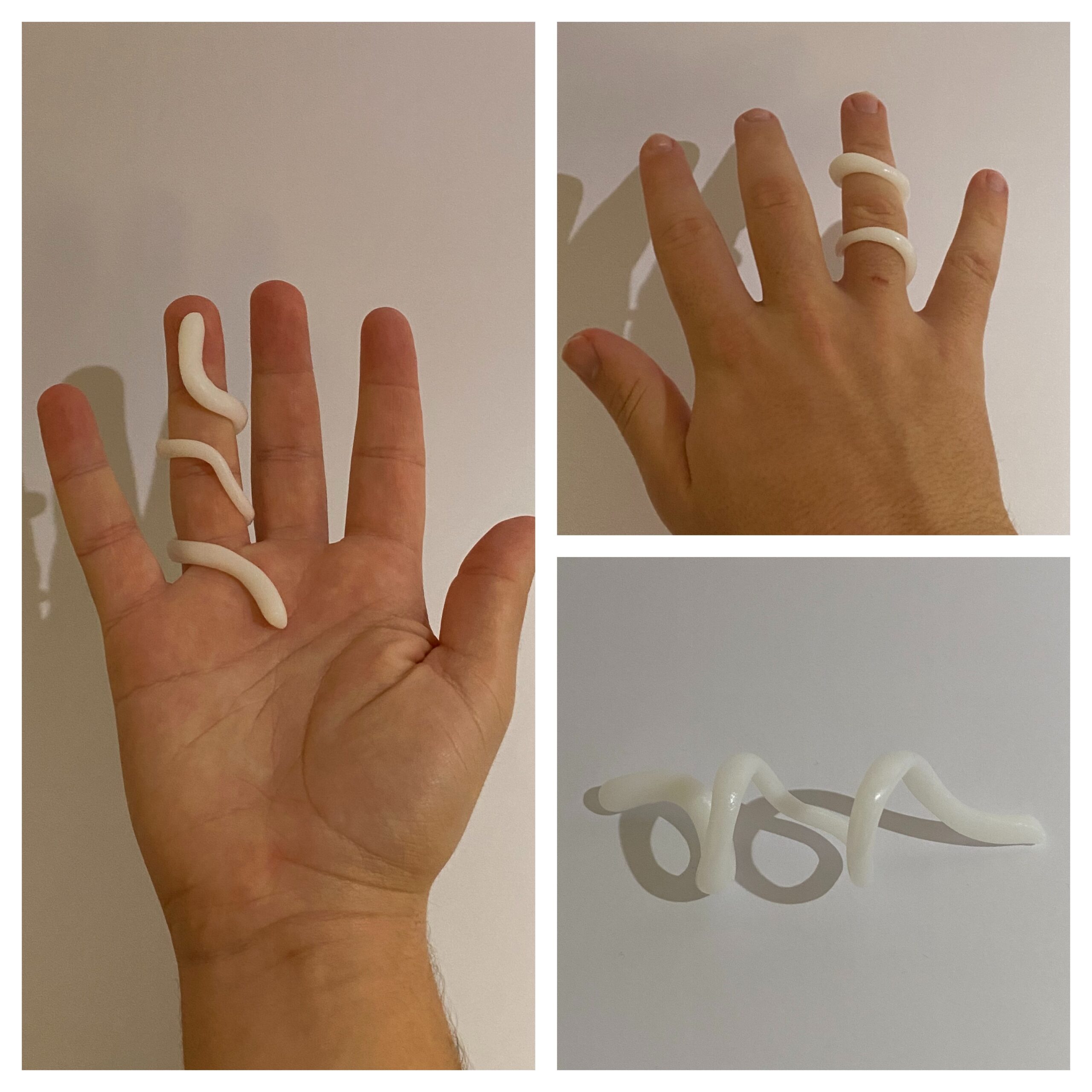
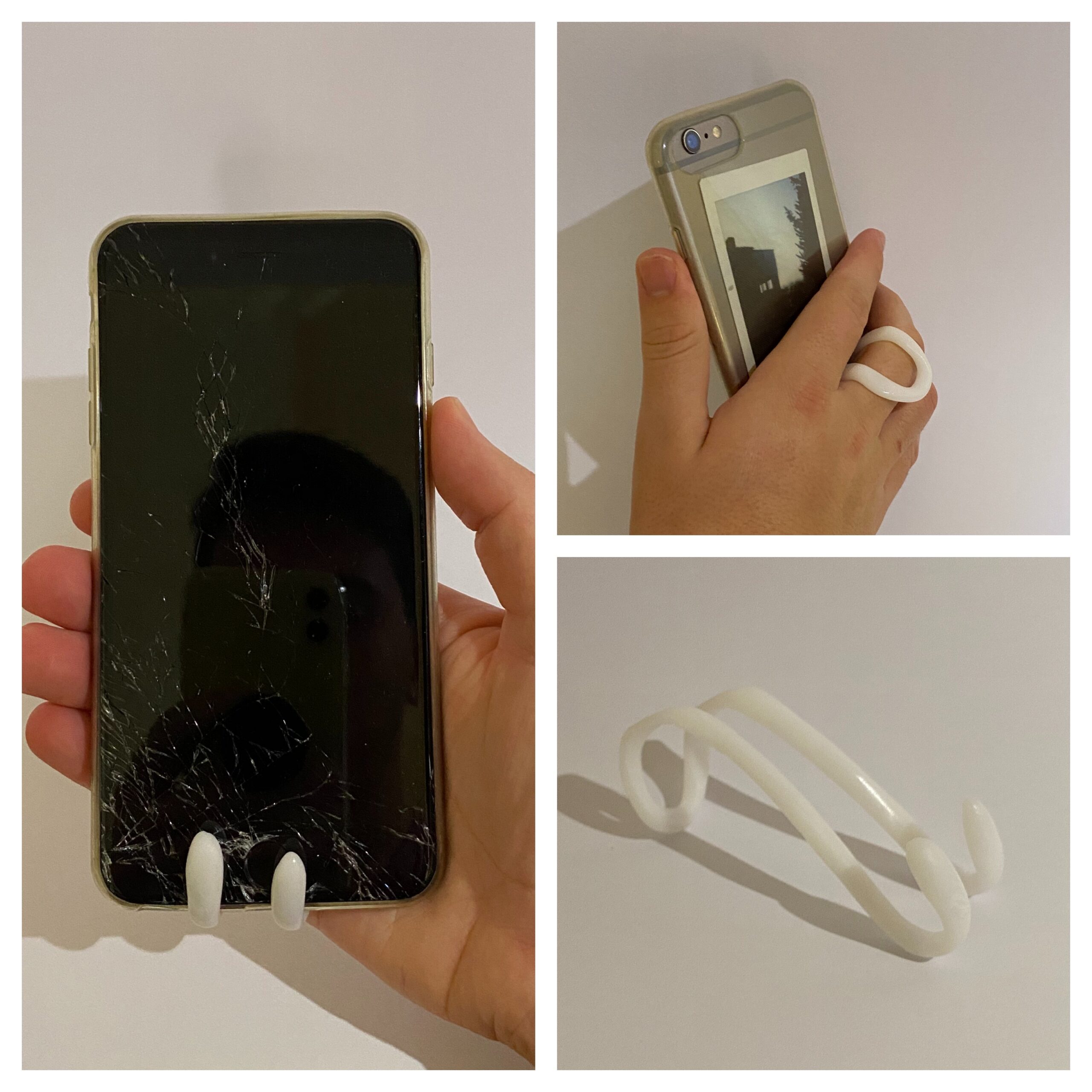
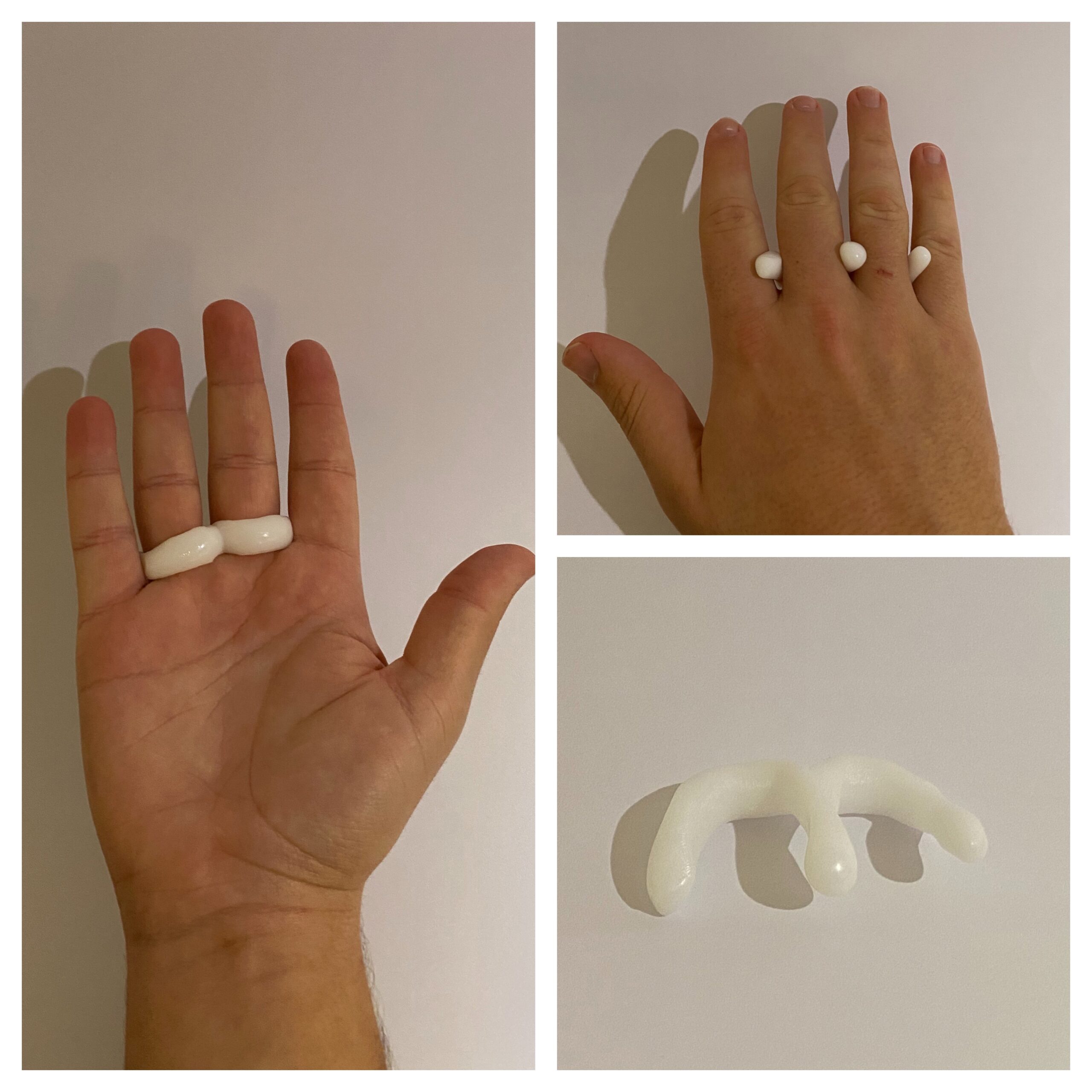
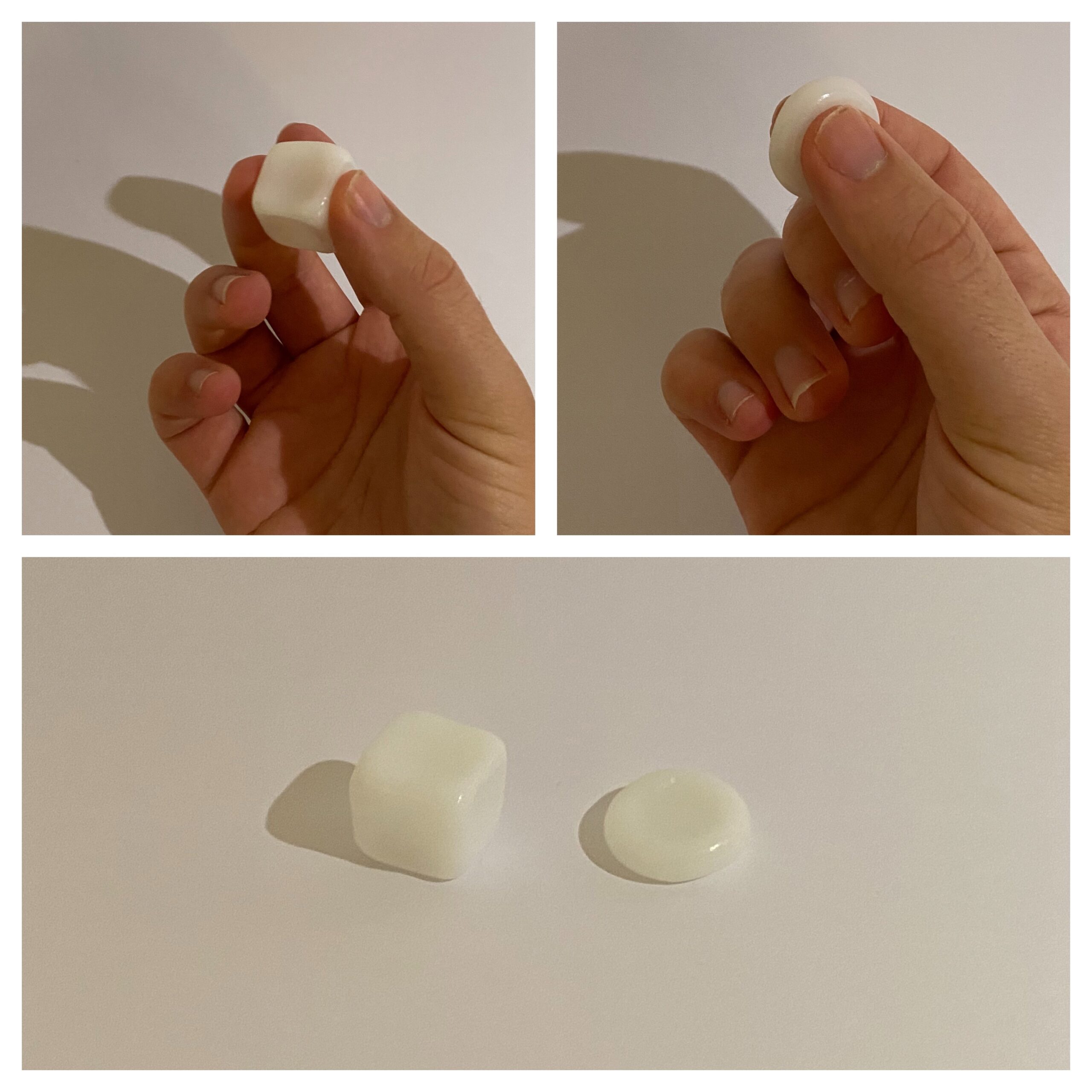

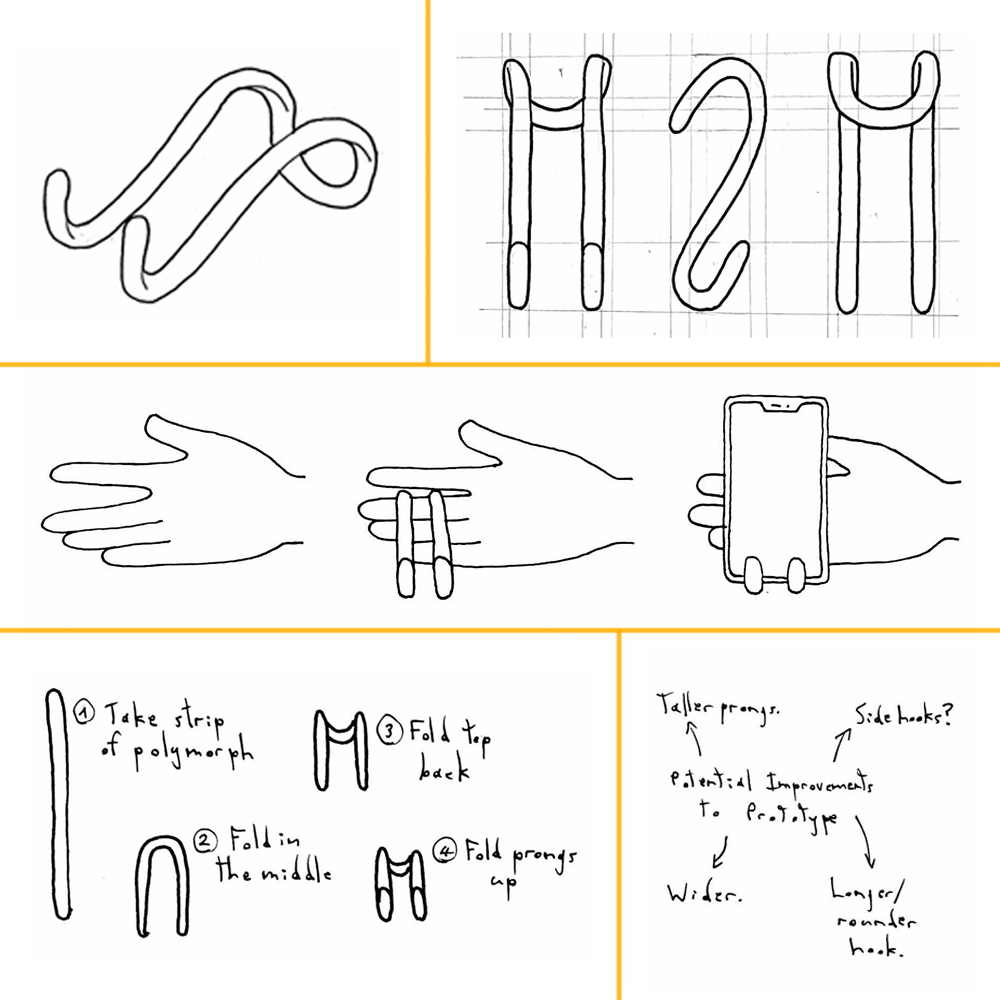
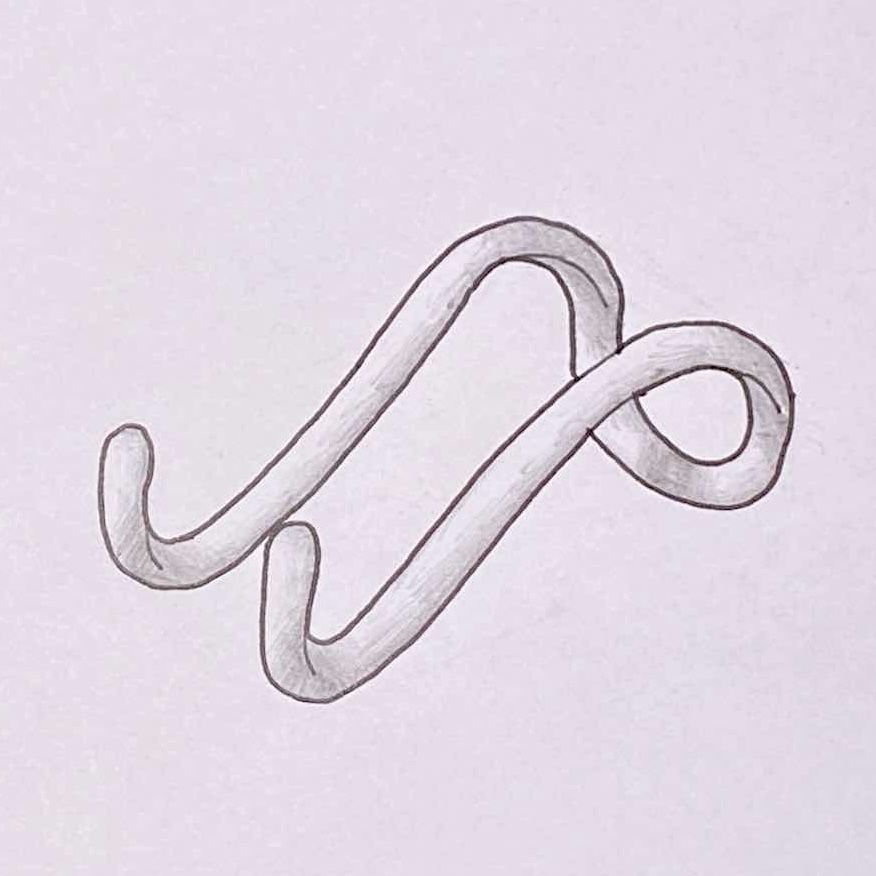
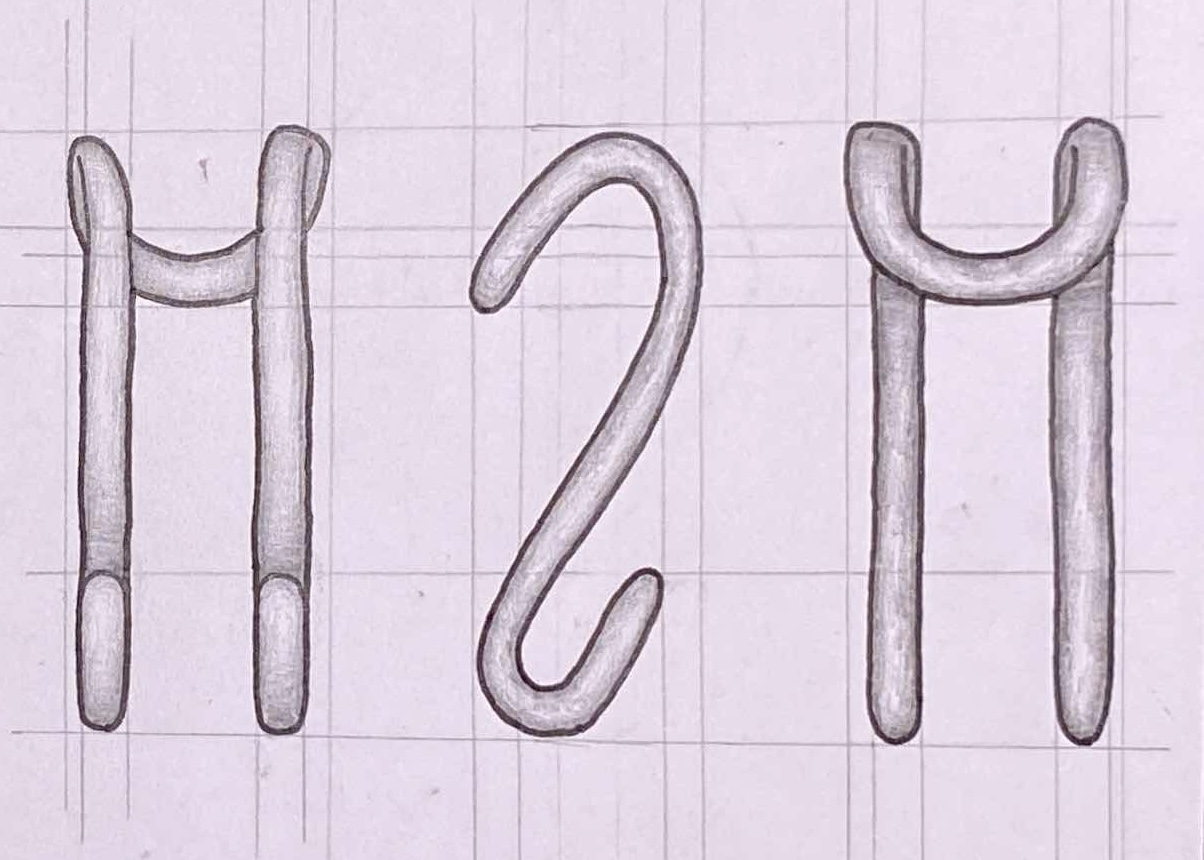
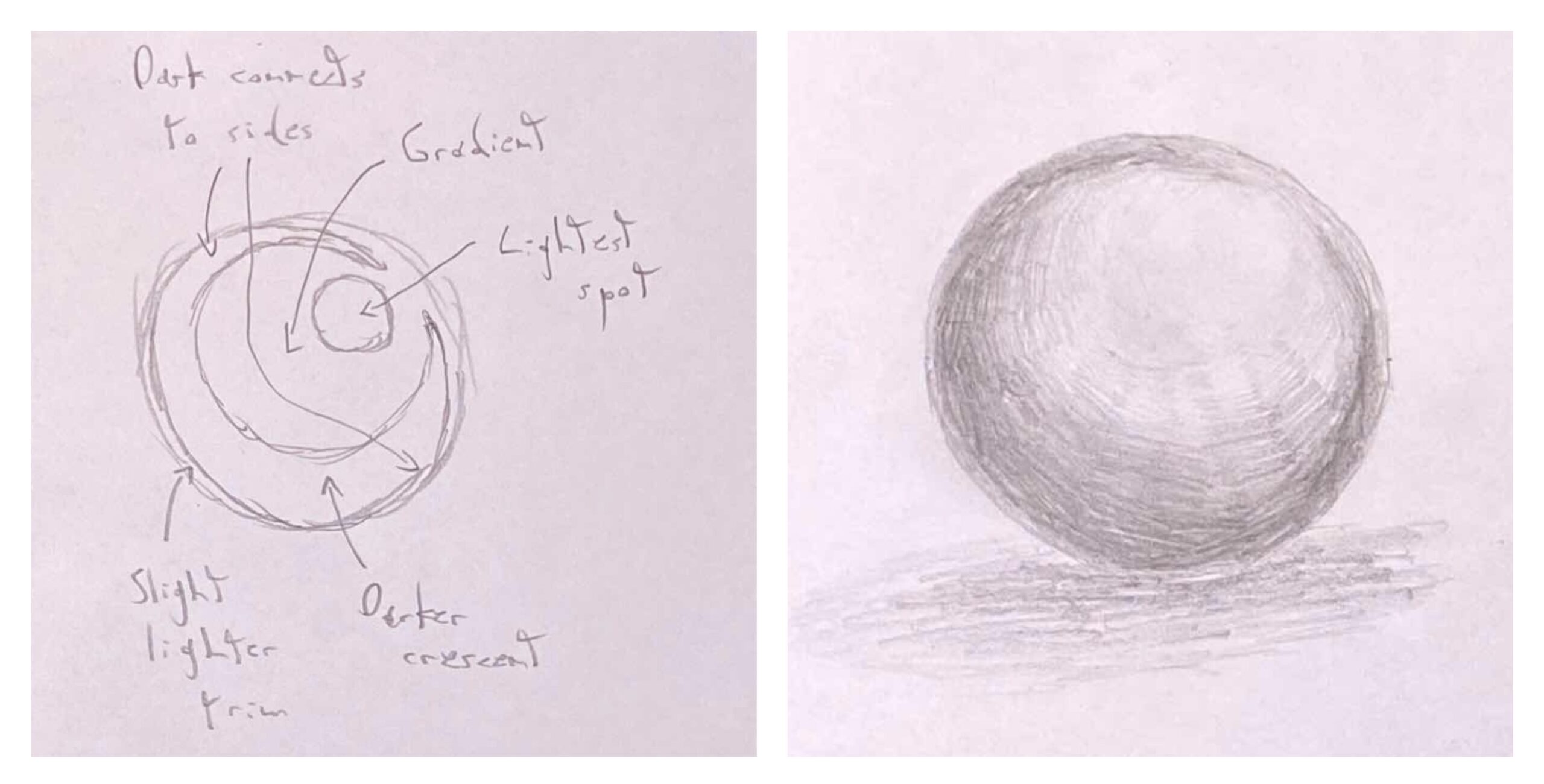
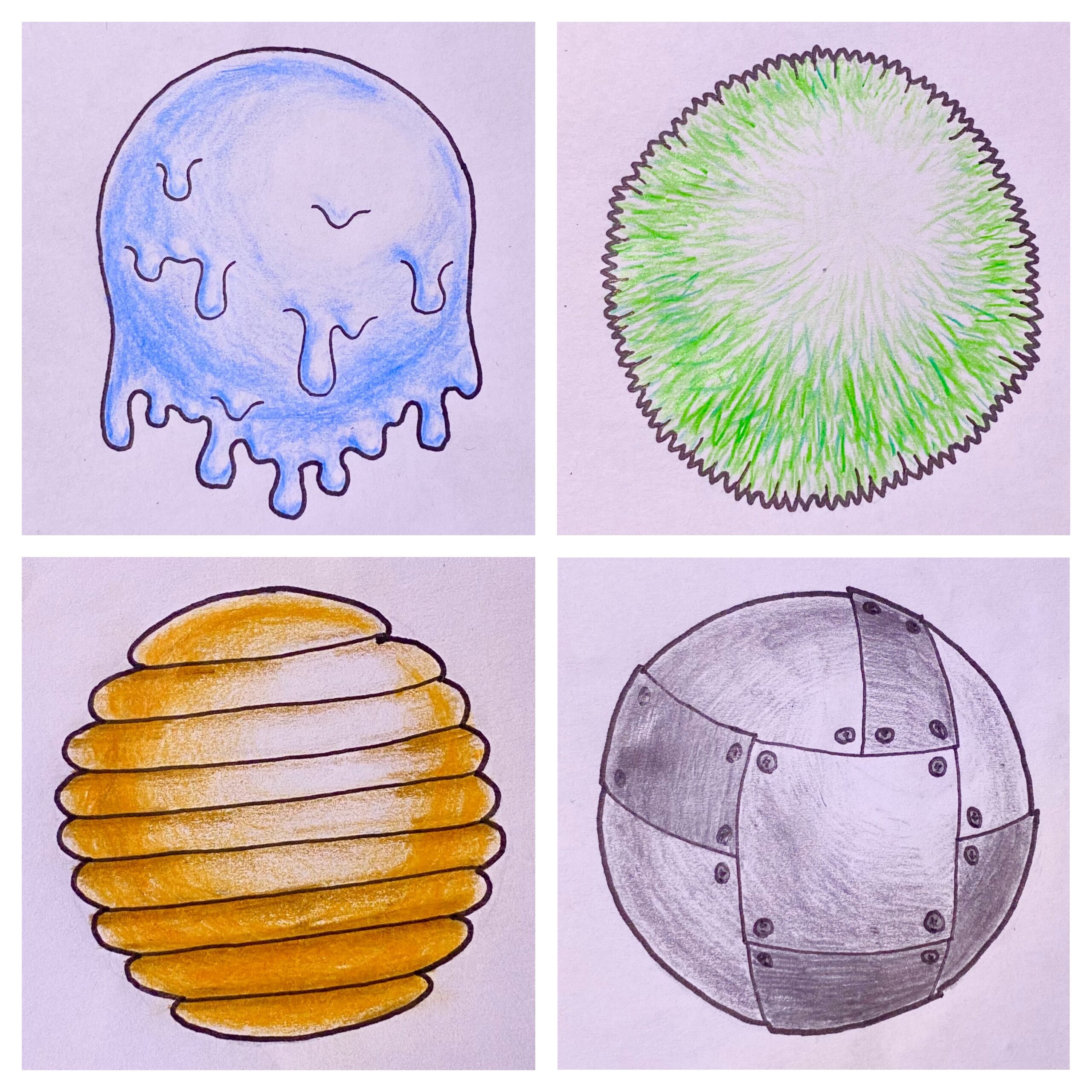
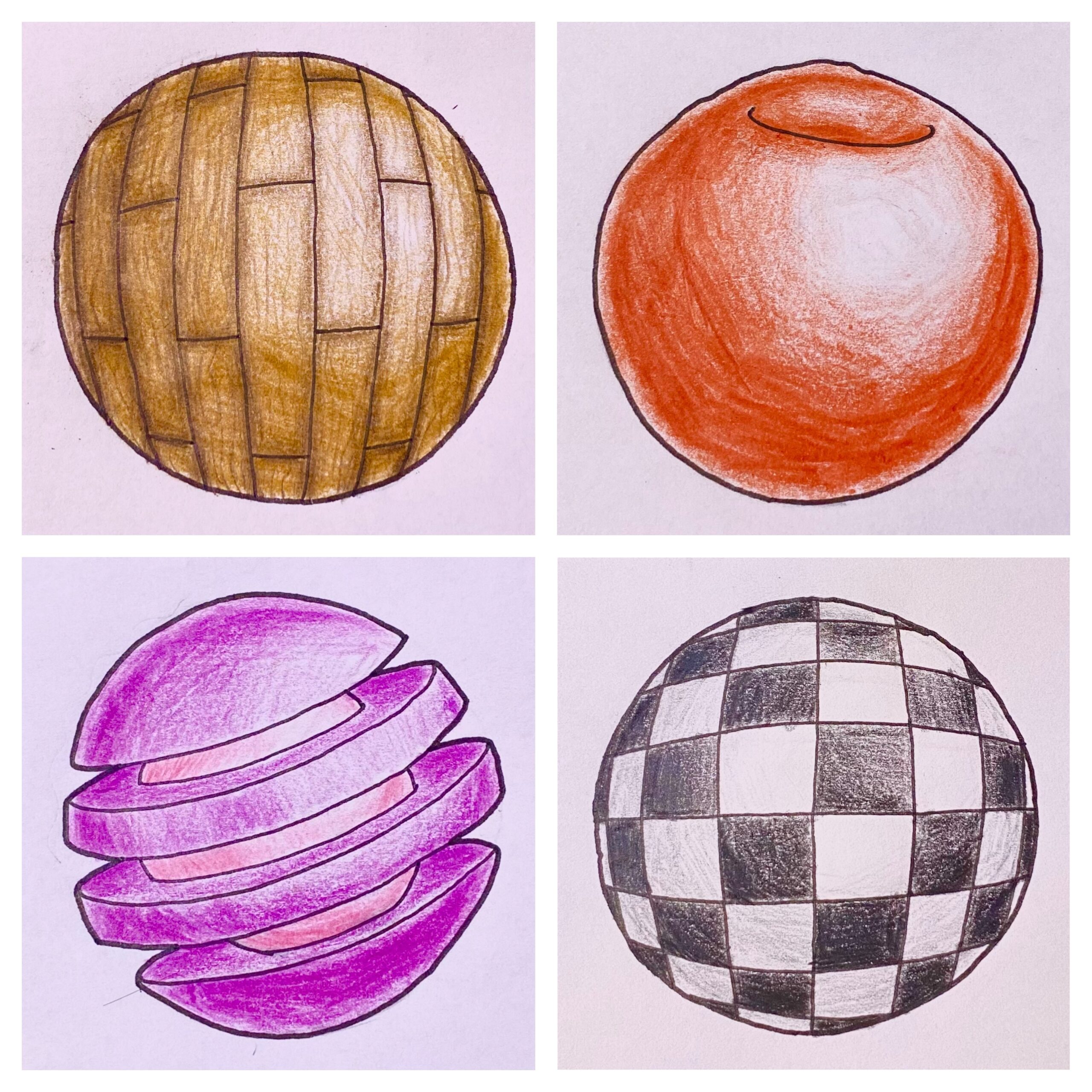
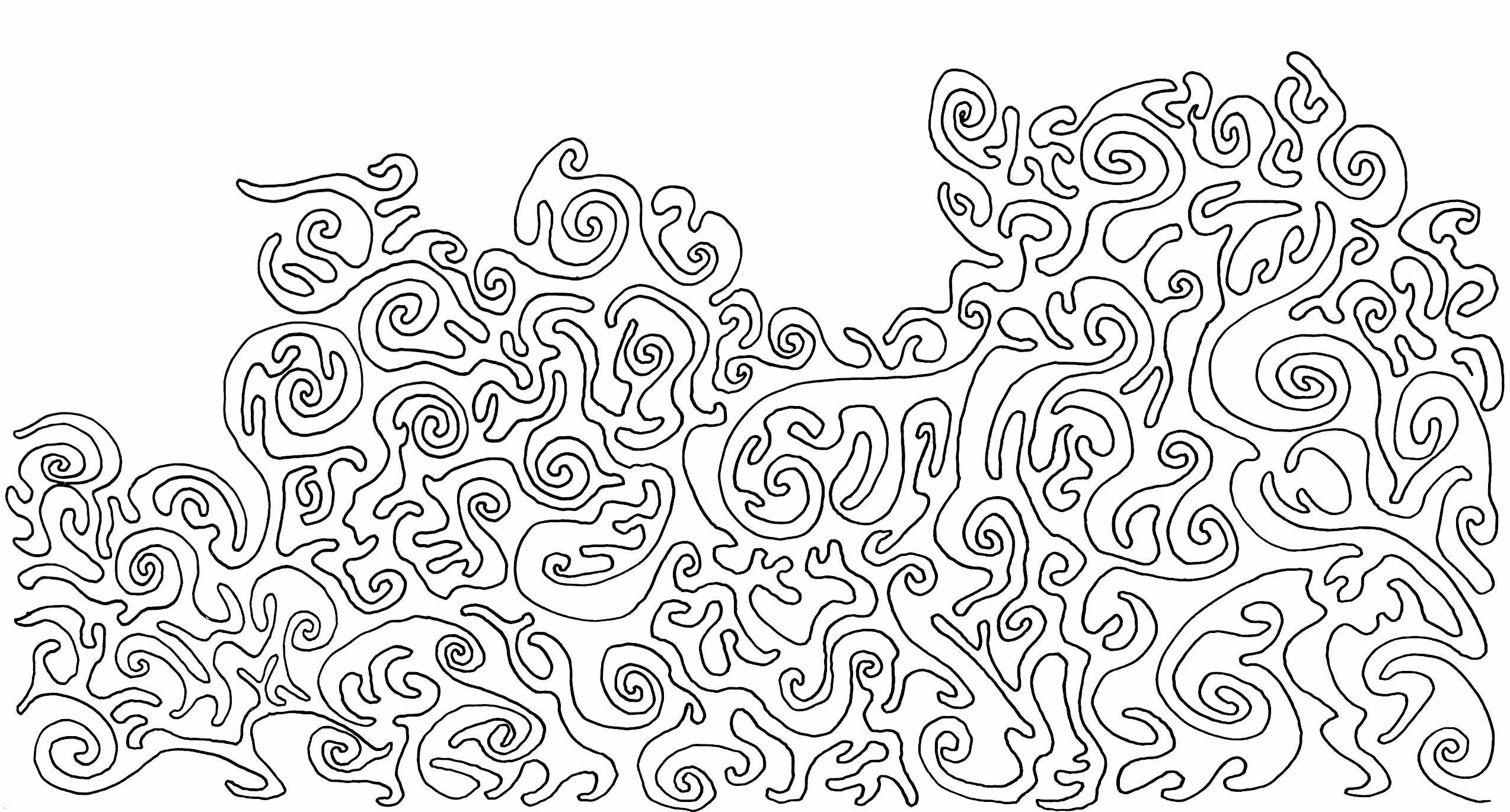

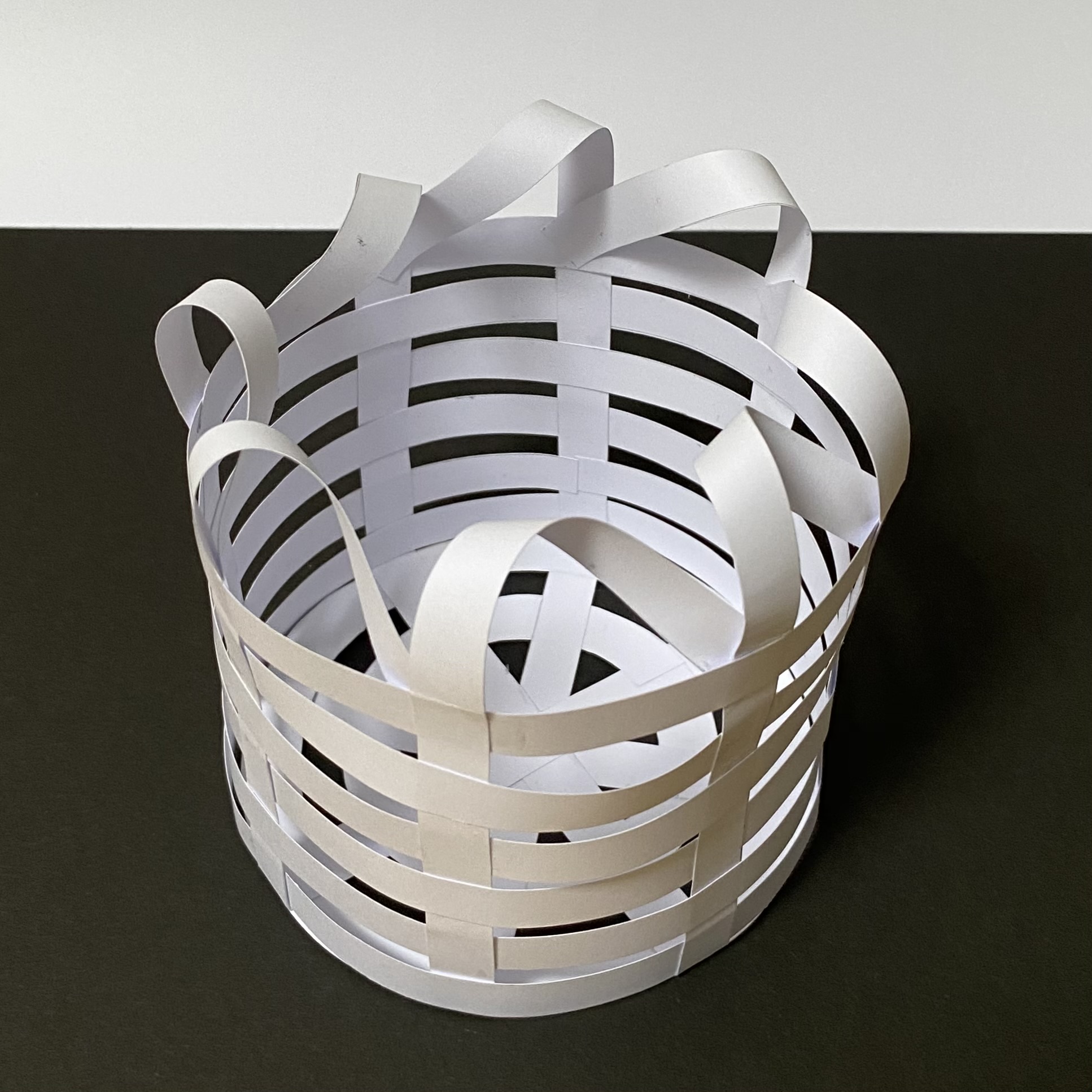 I then tried seeing how these ‘baskets’ would interact with light. The first one due to the material used, and its lack of perfect symmetry gave off a more natural, somewhat more organic light, which I thought was really cool.
I then tried seeing how these ‘baskets’ would interact with light. The first one due to the material used, and its lack of perfect symmetry gave off a more natural, somewhat more organic light, which I thought was really cool.
